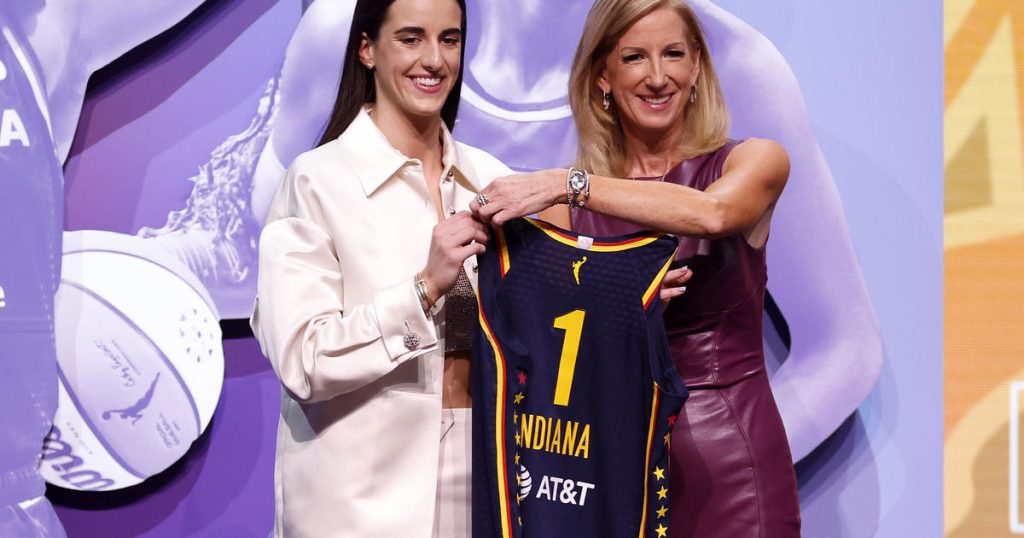College basketball star Caitlin Clark will make less than six figures in her debut season with the WNBA’s Indiana Fever, sparking conversations about the pay disparity between male and female athletes in the U.S. The first overall draft pick of this year’s draft, Clark will have a starting salary of $76,535 and earn approximately $338,000 over her four-year contract. The base pay for the top four picks of this year’s draft shows only a slight increase over the next few years. Lower-ranked draft picks earn even less, according to the collective bargaining agreement between players and the league. Players are also eligible for performance-based bonuses at the end of the season.
In addition to her WNBA salary, Clark is expected to earn more through sponsorship deals. Her name, image, and likeness are already valued at $3 million, and she has landed commercials for brands like Gatorade, State Farm, and Nike. Despite these additional earnings, Clark’s base pay is vastly lower compared to male athletes in the NBA, such as the first pick in last year’s draft who made over $12 million in his first season. President Biden has weighed in on the issue of pay disparity, emphasizing the need to provide equal opportunities and compensation for female athletes.
The debate around what female athletes deserve in terms of pay is ongoing. The WNBA generates considerably less revenue compared to the NBA, leading to lower salaries for its players. Greg Bouris, a sports management professor, notes that the league needs to grow its revenue to increase player salaries. While Clark has been successful in college basketball, she has yet to prove herself in the professional arena, which is why rookie salary caps are in place. However, she is expected to bring significant attention and economic impact to the WNBA.
Despite the progress made in promoting pay equity in the WNBA, the pay gap between male and female athletes in basketball and other sports remains significant. Only female tennis players have achieved a measure of equity in terms of pay. In order for WNBA players’ salaries to rise, the league will need to secure bigger broadcast deals, lucrative sponsorships, and increase ticket and merchandise sales. The arrival of players like Caitlin Clark is seen as a potential turning point for the league, with the potential for increased revenue through heightened interest and support.
Overall, the discussion around fair pay for female athletes in professional sports is complex and multifaceted. While there have been improvements in pay equity within the WNBA, the league still lags behind its male counterpart in terms of revenue and salaries. The impact of players like Caitlin Clark in raising the profile of women’s sports is seen as a positive step towards increasing revenue and support for female athletes. It remains to be seen how the league will continue to address and improve the issue of pay disparity in professional basketball and other sports.


